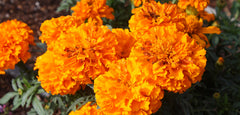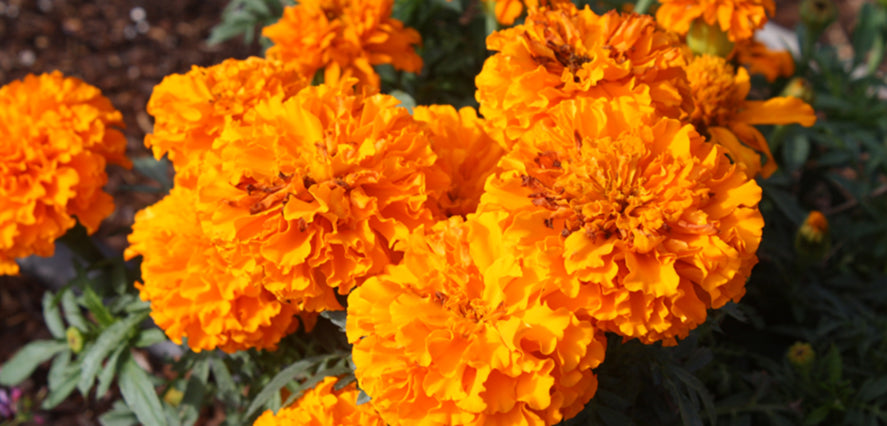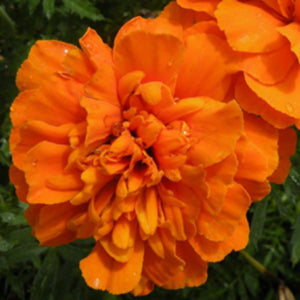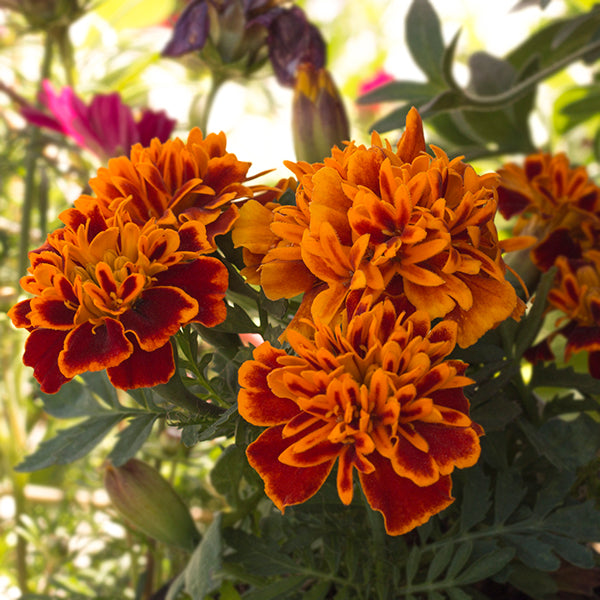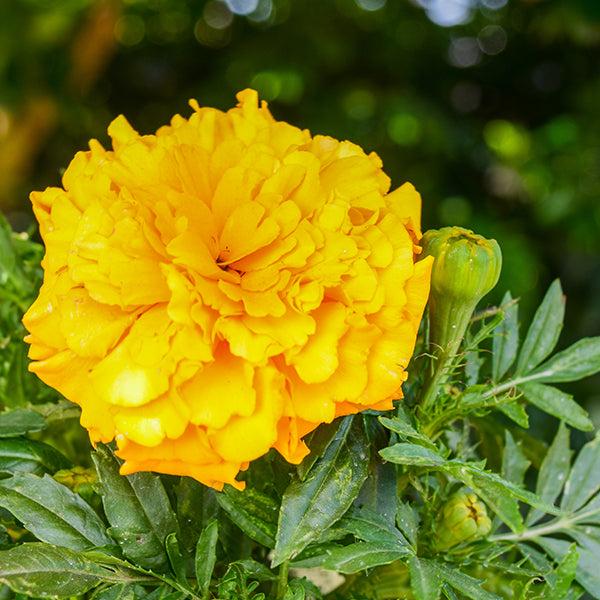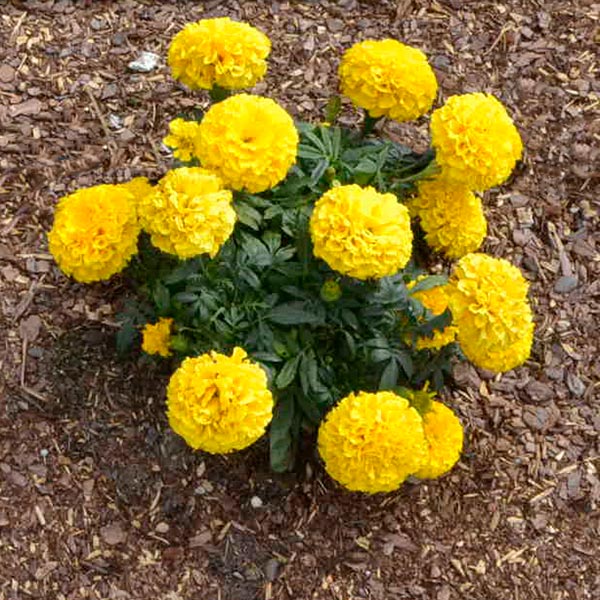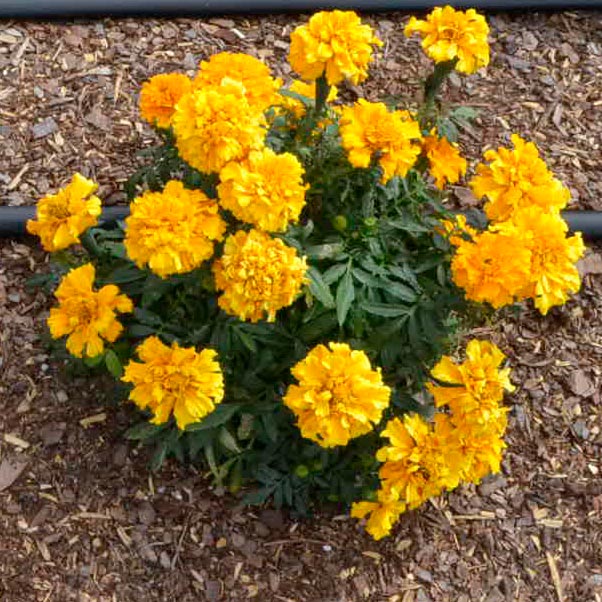Marigold (Tagetes spp.)
Marigold Plant Features
Planting marigolds is like planting sunshine! These super-cheerful annual flowers are a snap to grow, offering nonstop bloom all summer long. The plants are virtually insect and disease free and come in a variety of flower types and heights. Taller African marigolds can grow 3 feet high and look amazing planted in beds by themselves or mixed with zinnias. Dwarf, compact French varieties grow about a foot tall, making them perfect for the edge of your flower bed or in pots and planters. Colors include yellow, orange, white, red or bi-color. The plants are highly prized by butterflies who feast on the nectar-rich blooms.Marigolds are often planted in or around vegetable gardens to repel pests such as rabbits. While there's no scientific evidence saying this helps, marigolds do dress up an otherwise bland vegetable garden. And the bees, butterflies, and other pollinators they attract can help you get more yield from your vegetables.
Marigold Questions?
Email us your questions and one of our experts will get back to you.
Marigold Growing Instructions
Natives of Mexico, marigolds prefer a hot, sunny garden location that receives at least 6 to 8 hours of direct sun a day. They do best in a rich, well drained soil, but are tolerant of drought and high temperatures. Most varieties have a pungent scent, especially when the foliage is rubbed or brushed.These plants are not recommended for human or animal consumption.
-
Water
Medium water needs
-
Light
Outside: Sun
-
Colors
Orange
Red
White
Yellow
-
Special Features
Attracts butterflies
Fragrant flowers/foliage
Complement your Marigold
AngeloniaAngelonia and Marigold look good together in a border or large container.
Dusty Miller
The gray-leaves of Dusty Miller and the bright yellow flowers of Marigold are a pretty combination all summer long.
